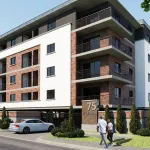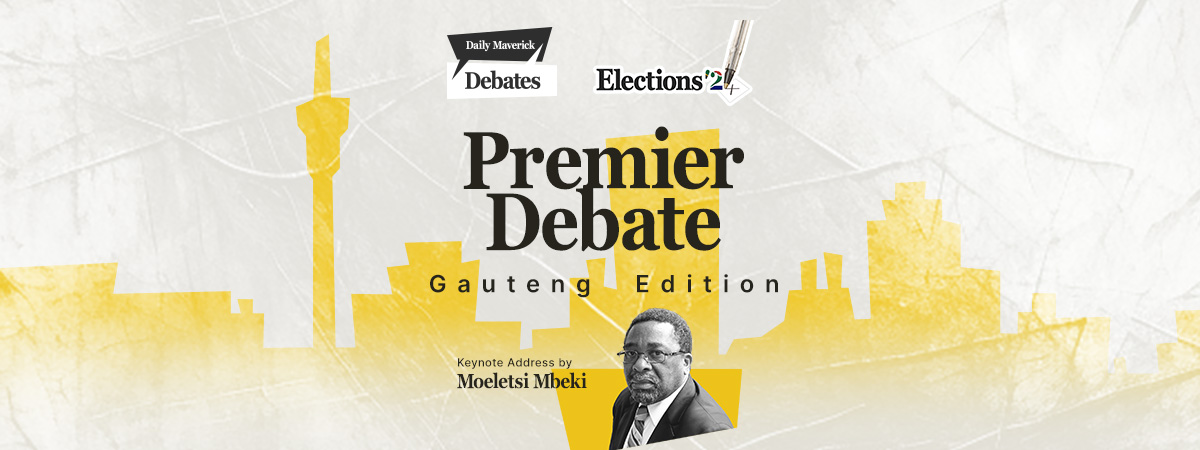This is highly unlikely, and according to the handy website willrobotstakemyjob.com, it only has a meagre 4% chance of happening. But, the technology could be the answer to the legal woes of billions of people who don’t seek the help of a lawyer due to the enormous barriers to justice. We need only to look in our own backyard for a prime example.
South Africa, despite its respected Constitution and brilliant legal minds, still remains one of the most legally under-serviced countries in the world.
Significant financial and educational barriers persist between South Africans and justice, with the wealthy still seeming to be the only ones enjoying the system. As former Harvard President Derek Bok noted: “There is far too much law for those who can afford it and far too little for those who can’t.” (Barton, 2017). To add to this dismal outlook, a 2016 study conducted by the Department of Justice and Constitutional Development (DOJ&CD) pointed out that only 51% of South Africans are aware of their constitutional rights.
The current system is not sustainable and even struggles to cater to the few who can access their rights. If estimates from the World Bank are correct and South Africa’s population grows to a projected 65 million and the per capita income doubles by 2030, more citizens will want access to their rights. Of course, this begs the questions of whether the existing system can hold up?
Unfortunately, it seems unlikely. The DOJ&CD’s annual reports show that approximately 1,044,346 new court cases were opened in 2010, which roughly translates to 2% of the population having a case. By 2016, 2,264,043 cases were opened, a growth more pronounced than the population growth. Relationally, that represents 4% of the population, a double in case-to-population ratio.
Change is needed
Hopefully, something’s going to give. Although the DOJ&CD aims towards transforming the law in providing previously disenfranchised people with more access to justice, the current old-school approach is failing. The services are growing proportionally to population growth and not increasing into a more significant segment of the population per se.
Considering the cost of accessible law via Legal Aid South Africa (LASA), which accounts for roughly 10% of the DOJ&CD’s expenditure, it has grown at an average of 4.8% per year, while the annual caseload of the LASA has only increased by an average of 2%. If one takes the population growth over the last decade into account and divides the number of cases by citizens, the service has remained proportionally the same, with 0.8% of the population utilising the assistance of LASA from 2006 until 2016.
From the available data in their annual reports, it seems that legal service is becoming more expensive and not growing fast enough to accommodate the whole of South Africa’s population.
Are we investing in the right legal future?
Building courts and paying staff remain the most substantial portion of the DOJ&CD’s budget. In 2019, another R1.6-billion High Court is set to be completed in Mpumalanga (after missing the earlier completion date), while the budget to justice modernisation falls just under the R1-billion mark, according to National Treasury’s budget estimates.
At the same time, on a possibly positive note, Tito Mboweni’s 2019 budget speech nods to the importance of getting our government tech-ready, but historically we have been very slow on this front. While the world invests heavily in tech, as the Digital Evolution Index shows, South Africa remains in the danger zone.
The DOJ&CD has increased its annual expenditure on modernisation, although the exact amounts on some reports are missing. Spending grew from R301-million in 2008 to R889-million in 2016, which is very little growth if one considers inflation and the rise of tech. We are not investing enough, and certainly not managing it effectively either. Projects are initiated and reports are mum on completion or success.
Three things SA can do with technology to transform the Justice System
The positive contribution technology could have for the country is boundless. We are entering a new age that’s not just different, but has the potential to be better. South Africa stands to gain a more just society and that should be the trump card when we think about implementing technology and the future of law.
Court reform
There has already been a shift in trying to alleviate the pressure on the court system by finding methods for individuals to access justice without the use of a legal practitioner. The pro se or “for oneself” approach of the Commission for Conciliation, Mediation and Arbitration (CCMA), Small Claims Court (SCC) and Maintenance Court are prominent examples.
The idea behind reforming the court structure is to allow greater access by ensuring the public has sufficient knowledge, online forms and tools to prepare for representing themselves while eradicating financial barriers to justice. These courts follow an inquisitorial system whereby the “judges” remain in charge and guide and ask the participants, which empowers people and takes the fear out of the law.
This approach could be developed radically with the use of technology. Technological reforms could create online courts for undisputed or less complex matters that currently burden the CCMA, SCC and other civil and family matters in the lower courts and high courts. With the growing backlog experienced in the lower and high courts (an increase of 18,7% in backlog cases during 2016) and the decrease in court hours of 7% which amounts to 32,000 hours, according to the Mail & Guardian.
Online courts are open 24/7, which solves a tremendous court time resource obstacle. They are able to adjudicate and finalise matters without delay in real time. Online courts draw on the objective ability of AI judgments that take all relevant case law and legislation into account. In recent initial studies, the efficiency and accuracy of AI scored far better in comparison to legal practitioners (85% accuracy for human lawyers versus 94% for AI levels).
Various legal matters could be solved in this manner: uncontested divorces, where a settlement was reached by the parties, which could be lodged and processed without any legal practitioner or brick-and-mortar court intervention, so with SCC matters, maintenance enquiries, debt matters and many other less complex civil cases.
The financial obstacle to justice is eliminated, which would allow economically challenged citizens to also access the protection of their rights online, without the need for a legal practitioner. This pro se approach greatly enhances the confidence and autonomy of South Africans.
Online Dispute Resolution (ODR)
Further relief on CCMA, SCC and lower courts would be in the form of Online Dispute Resolution.
South Africa has a deep history of mediation that fits the African principle of Ubuntu. Utilising mediation has gained considerable support in the establishment of the CCMA, and is successfully used in criminal justice and restorative justice.
In 2015, the Court Mediation Rules were adopted whereby individuals can follow a five-step programme with court-aligned mediation arranged by the Department. All the mediation efforts thus far are still face-to-face but show the success and appetite for South Africans to finalise disputes amicably.
In Rebooting Justice (2017) the success of ODR via a model designed by Colin Rule for eBay and PayPal to alleviate the disputes between eBay sellers and buyers. Roughly 1% of all transactions end in conflict, which translates to 40 million disputes per year. eBay wanted to find a system that would be able to deal with this, as even appointing a thousand mediators would still result in them falling short of the magnitude of cases.
The ODR system follows a staircase approach that tries to get participants involved as early as possible, which proves to be a great benefit of ODR. Face-to-face mediation tends to only occur after a dispute has gained momentum. In the case of ODR, many disputes are nipped in the bud.
With ODR, participants start with a diagnosis model whereby all relevant information is uploaded and analysed with the use of AI, which finds similarities, notes disagreements and suggests solutions. If this fails, the parties move onto a negotiation model, which is, in turn, followed by a mediation model. Algorithms are used to separate disputes that are possible to settle and those that are hard to deal with. This approach has worked well, settling over 60 million disputes a year with a success rate of 90% without human intervention.
Many disputes brought to court by South Africans or disputes that are experienced that never enjoy the justice of court or mediation due to access could be solved by a government ODR model. The immense pressure this would alleviate from the CCMA, SCC, Maintenance Court and other adjudication fora is extraordinary. What’s more, it could further penetrate a part of the market who feel powerless to even attempt to bring a matter to justice or those who have lost their faith in the justice system.
The principle further fits with the African way of resolving disputes mutually. Interestingly, customers of the eBay model rate the experience highly, even though they “lost” (Barton, 2017).
This model has also been utilised by British Colombia’s Consumer Protection Bureau for property tax disputes in certain US counties, like Nashville and New Orleans. The United Nations Commission on International Trade Law (UNCITRAL) has also employed this for cross-border e-commerce and business-to-business disputes by the UN.
Legal education and advice
Another major development area within the DOJ&CD should be the implementation of a 24-hour online legal advice and education system. With the vast amount of legal data the court system and DOJ&CD have built up, utilising IE, AI and natural language, a smart government advice department could be designed online.
A virtual lawyer that is able to answer citizens in natural language and provide them with legal advice, forms and templates, as well as their prospects of success in pursuing the matter in further litigation or mediation.
Innovative design has already sprouted in this field; donotpay.com is one example of a simple system that answers legal questions in natural language and provides legal documents, letters of demand and contracts within seconds. There are various other options for contracts like RobotLawyer LISA and LegalZoom, and a thousand more.
All current education platforms of the DOJC&D are static websites with downloadable PDF forms. There is little interaction, and it is burdensome to navigate through the information without a basic knowledge of the law. With a virtual lawyer, citizens would be able to ask any question of law or which relates to any institution and find the answers and resources instantly.
In the future, technology will play the most important part in improving access to justice in South Africa. But of course, before tech-based solutions can rise, data must fall. DM
















